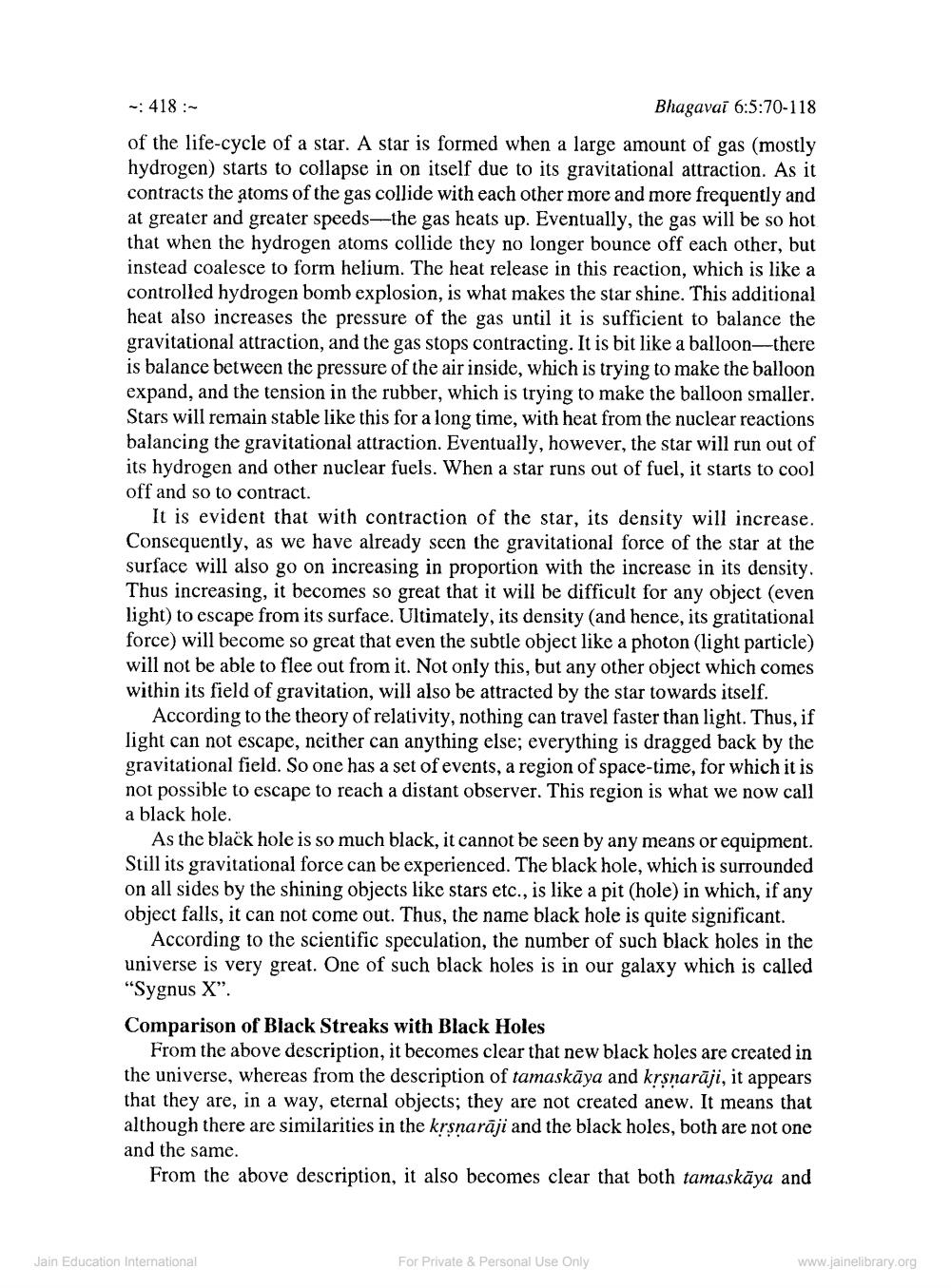________________
~: 418 :~
Bhagavai 6:5:70-118 of the life-cycle of a star. A star is formed when a large amount of gas (mostly hydrogen) starts to collapse in on itself due to its gravitational attraction. As it contracts the atoms of the gas collide with each other more and more frequently and at greater and greater speeds-the gas heats up. Eventually, the gas will be so hot that when the hydrogen atoms collide they no longer bounce off each other, but instead coalesce to form helium. The heat release in this reaction, which is like a controlled hydrogen bomb explosion, is what makes the star shine. This additional heat also increases the pressure of the gas until it is sufficient to balance the gravitational attraction, and the gas stops contracting. It is bit like a balloon-there is balance between the pressure of the air inside, which is trying to make the balloon expand, and the tension in the rubber, which is trying to make the balloon smaller. Stars will remain stable like this for a long time, with heat from the nuclear reactions balancing the gravitational attraction. Eventually, however, the star will run out of its hydrogen and other nuclear fuels. When a star runs out of fuel, it starts to cool off and so to contract.
It is evident that with contraction of the star, its density will increase. Consequently, as we have already seen the gravitational force of the star at the surface will also go on increasing in proportion with the increase in its density. Thus increasing, it becomes so great that it will be difficult for any object (even light) to escape from its surface. Ultimately, its density (and hence, its gratitational force) will become so great that even the subtle object like a photon (light particle) will not be able to flee out from it. Not only this, but any other object which comes within its field of gravitation, will also be attracted by the star towards itself.
According to the theory of relativity, nothing can travel faster than light. Thus, if light can not escape, neither can anything else; everything is dragged back by the gravitational field. So one has a set of events, a region of space-time, for which it is not possible to escape to reach a distant observer. This region is what we now call
a black hole.
As the black hole is so much black, it cannot be seen by any means or equipment. Still its gravitational force can be experienced. The black hole, which is surrounded on all sides by the shining objects like stars etc., is like a pit (hole) in which, if any object falls, it can not come out. Thus, the name black hole is quite significant.
According to the scientific speculation, the number of such black holes in the universe is very great. One of such black holes is in our galaxy which is called "Sygnus X".
Comparison of Black Streaks with Black Holes
From the above description, it becomes clear that new black holes are created in the universe, whereas from the description of tamaskāya and kṛṣṇarāji, it appears that they are, in a way, eternal objects; they are not created anew. It means that although there are similarities in the kṛṣṇarāji and the black holes, both are not one and the same.
From the above description, it also becomes clear that both tamaskaya and
Jain Education International
For Private & Personal Use Only
www.jainelibrary.org




